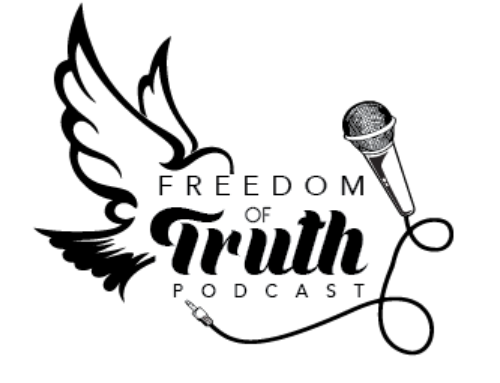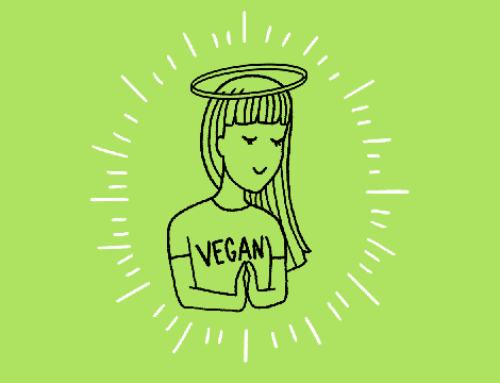9 Healthy Tips to Help You Start Eating a Vegan Diet
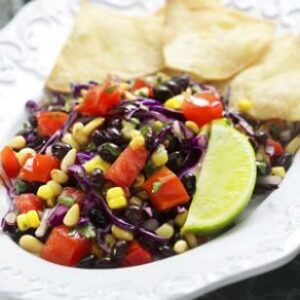
Pictured Recipe: Southwestern Corn & Black Bean Salad
If cutting out meat, dairy and eggs leaves you confused about how to eat a healthy, balanced diet, you’re in the right place. Here are 9 healthy tips to starting a vegan diet.
You’ve probably heard that eating more vegetables and less meat is healthy. Maybe you’re even feeling inspired to try eating a vegan diet—which excludes all animal products, including dairy and eggs—to improve your health or lose a little weight. Eating a vegan diet can be a healthy way to eat when your meals are full of vegetables, fruits, legumes and whole grains. You need a well-planned vegan diet to make sure you don’t miss out on essential nutrients or end up eating only processed vegan foods. Here are 9 simple tips for eating a vegan diet that is easy and healthy. Even if you’re just trying to adopt a more plant-based diet for better health, these tips are a great way to get started.
—Lisa D’Agrosa M.S., R.D.
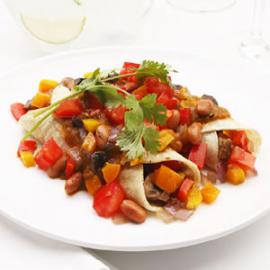
Pictured Recipe: Roasted Vegetable Enchiladas
1. Make Vegetables the Stars of Your Meals
People often get hung up on what they can’t have on a plant-based diet, instead of what they can. But a great meal does not have to center on meat. Veggie-packed meals are a winning choice all-around: veggies are full of vitamins (like A and K) and minerals (like potassium), they keep your calories in check and, because they are high in fiber, they can help you feel more satisfied.
Pictured Recipe: Zesty Wheat Berry-Black Bean Chili
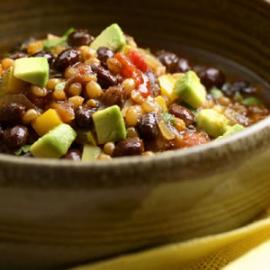
2. Eat a Variety of Foods
To make sure you’re getting all the nutrients you need on a vegan diet, it’s important to eat balanced meals that include a variety of healthy foods. For example, you’ll get protein and fiber from beans; leafy greens are great sources of vitamins A, C and K. Choose produce from all colors of the rainbow to get all the benefits. Red tomatoes have heart-healthy lycopene, blue blueberries have brain-boosting anthocyanins and orange sweet potatoes have lots of vitamin A to help keep eyes healthy. Looking for meal ideas? Try a simple well-balanced grain bowl: top brown rice, or quinoa, with beans and a mix of sautéed or roasted veggies.
Recipes to try: Enjoy a simple well-balanced plate of brown rice and beans with vegetables or a hearty bowl of our Zesty Wheat Berry-Black Bean Chili, chock-full of nutrient-rich veggies and whole grains.
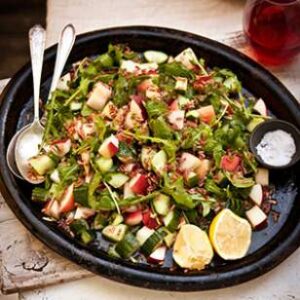
Pictured Recipe: Red Rice Salad with Peaches & Cucumber
3. Choose Whole Grains
Swapping out refined grains, such as white pasta and white bread, for whole grains, such as brown rice and quinoa, adds iron and B vitamins to a vegan diet (nutrients that are stripped out when the grains are refined). And, the extra fiber from whole grains will help keep you full, and may even help you lose weight.
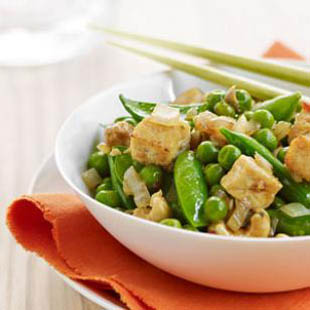
Pictured Recipe: Three-Pea, Cashew & Tofu Stir-Fry
4. Discover New Plant-Based Proteins
This seems like a no-brainer if you’re vegan, but one thing everyone can do for better health is eat more plant-based proteins. Animal sources of protein, like meat and cheese, tend to be high in unhealthy saturated fat. (Plus, there are plenty of good environmental reasons to cut out animal sources of food.) Vegan sources of protein really are plentiful and include: tofu, tempeh, edamame (soybeans), lentils, chickpeas and beans. Nuts, like almonds and walnuts, and seeds, like sunflower and pumpkin seeds, also deliver protein. Even though many people think it’s difficult for vegans to eat enough protein, it typically isn’t an issue for someone eating a varied diet and consciously including sources of plant-based protein. The Institute of Medicine recommends women get 46 grams of protein daily and men 56 grams—an amount that’s pretty easy to reach. Women would meet their daily quota with ½ cup of dry oatmeal (5 grams protein), 2 tablespoons of peanut butter (8 grams), 1/2 cup of chickpeas (5 grams),1 cup of cooked quinoa (8 grams), 24 almonds (6 grams), 1 cup of cooked whole-wheat spaghetti (7 grams) and 1/2 cup of tofu (10 grams). Men could add just ½ cup of cooked lentils (9 grams) to meet their daily protein requirement.
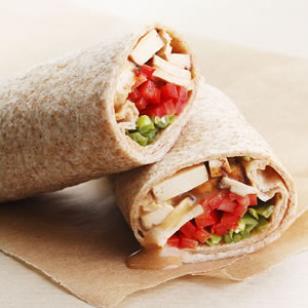
Pictured Recipe: Peanut Tofu Wrap
5. Don’t Assume Vegan Food Products Are Healthier
Vegan cookies aren’t necessarily any better for your waistline than regular cookies. And garlic bread made with vegan margarine isn’t necessarily any healthier for your heart than one made with butter. Processed vegan foods often contain saturated-fat-laden palm oil and coconut oil. Stick to whole, nutritious foods that just happen to be vegan, such as carrots and hummus, nuts and dried fruit, whole-grain tortilla chips with guacamole. Indulging in vegan treats every so often is fine, but don’t justify them as “healthy” simply because they’re vegan.
Recipe: Make your own quick, to-go foods like this Peanut Tofu Wrap.
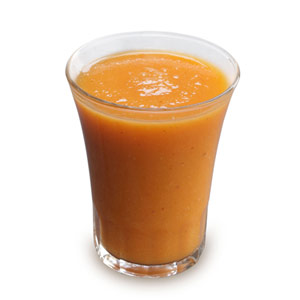
Pictured Recipe: “Get Your Orange” Flax Smoothie
6. Focus On Fish-Free Omega-3s
Even when you eat a variety of healthy vegan foods, some nutrients will be hard to come by. DHA and EPA, two types of omega-3 fatty acids, are important for eye and brain development, as well as heart health. Omega-3 fatty acids are found mainly in fatty fish like salmon, though they can be made by the body in small amounts from ALA, another type of omega-3 that’s found in plants like flaxseed, walnuts, canola oil and soy. A variety of foods, including soymilks and breakfast bars, are now fortified with DHA. Supplements of DHA/EPA made from algae are also available.
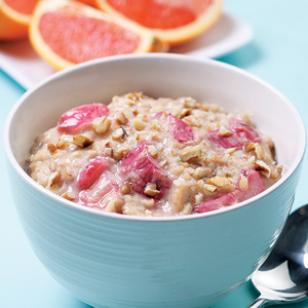
Pictured Recipe: Oatmeal-Rhubarb Porridge
7. Don’t Forget About Vitamin D
Most people get Vitamin D from canned fish like salmon and sardines and fortified dairy products like milk and yogurt, but D is also in some fortified nondairy milks such as soy or almond milk and orange juice. Some mushrooms that have been exposed to UV?light are also good sources. In the summer months, when the sun is stronger our skin can synthesize D. The daily value (DV) for vitamin D is 600 IU, with some experts saying that it should be closer to 1,500 IU. Many people, vegans included, may need to take a supplement to hit those numbers
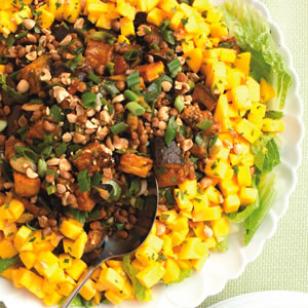
Pictured Recipe: Spiced Eggplant-Lentil Salad with Mango
8. Pump Up Your Iron
Animal proteins like meat and chicken are the best sources of iron, which is another nutrient that’s important for vegans to pay attention to. Vegans can still get this mineral from beans, legumes and leafy greens, but iron from plant sources (non-heme iron) isn’t as easily absorbed as it is from meat sources (heme iron). To get the most of plant-based iron, eat iron-rich foods with vitamin-C rich foods, which helps boost absorption, and not at the same time as calcium-rich foods, which can inhibit iron absorption.
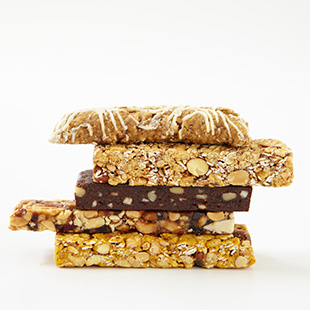
9. Be Aware of B12
Vitamin B12—a vitamin that helps transform food into energy in our bodies and aids in brain function—is found mainly in animal foods, such as meat, fish, poultry, eggs and dairy foods. People following a vegan diet can get some B12 from fortified cereals or energy bars, but should talk with their doctor about taking a supplement. The DV for Vitamin B12 is 2.4 micrograms for most adults.
Article Source: http://www.eatingwell.com/article/279566/9-healthy-tips-to-help-you-start-eating-a-vegan-diet/

